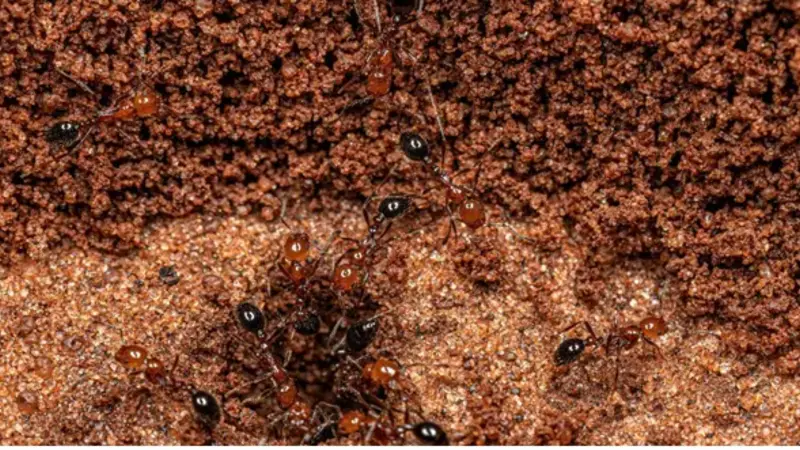Fire ants pose a significant threat to homeowners and property managers, leading to numerous challenges in pest control. Exploring fire ant exterminator case studies reveals effective strategies and techniques professionals employ in various scenarios. These real-world examples can provide insight into what methods yield the best results and how to approach fire ant infestations in your environment.
Through a detailed examination of specific case studies, you will see how different extermination approaches are tailored to unique situations. Understanding these applications will enhance your knowledge and equip you with practical solutions for effectively combating fire ants. The lessons from successful exterminations can guide your decisions and optimize your pest control efforts.
If you are currently dealing with a fire ant issue or simply want to be prepared, these case studies offer valuable information that can save you time and money. By analyzing the outcomes, you can better understand the challenges and successes of addressing fire ant infestations.
Understanding Fire Ant Infestations

Identifying fire ant infestations involves knowing the existing types and recognizing the common areas impacted. Understanding their behavior and habitat preferences can help you effectively manage these pests.
Types of Fire Ant Infestation
Fire ant infestations can be classified into two main types: mound infestations and turf infestations.
- Mound Infestations: These are marked by visible mounds in soil. Fire ants build these large mounds as nests, usually in open lawns or fields. You may see numerous worker ants around the mound, especially when disturbed.
- Turf Infestations: These occur in grassy areas where ants nest beneath the surface. You may not always see mounds, but you can notice increased ant activity. Turf infestations can damage lawns and affect the health of your grass.
Identifying these types is critical for effective extermination strategies.
Common Infestations in Coppell
Fire ant infestations In Coppell are frequently found in residential areas and parks. Key locations include:
- Lawns and Gardens: Fire ants are drawn to gardens with abundant food and vegetation. You may discover mounds hidden among plants.
- Playgrounds and Sports Fields: These areas often attract fire ants due to soil disturbance and foot traffic, making them potential hotspots for infestations.
- Storm Drains and Waterfronts: These locations provide moisture and protection, ideal for fire ant colonies.
Recognizing these common areas can help you take preventive measures and seek targeted extermination when necessary.
Extermination Techniques and Insights
Effective fire ant extermination requires a combination of techniques and an understanding of these pests’ behavior. This section explores methods used by exterminators and valuable insights gained from recent extermination efforts.
Effective Exterminator Techniques
Fire Ant Exterminator Case Studies often employ a mix of chemical and non-chemical methods. Baiting systems are commonly used to attract and eliminate entire colonies. These baits contain slow-acting insecticides that allow ants to transport the poison back to their nest, killing the queen and other workers.
Insecticide sprays can also effectively treat visible piles or mounds. For safe and effective use, it’s essential to follow label instructions. Additionally, some exterminators may use granular insecticides, which can penetrate deep into mounds and provide residual control.
Implementing an integrated pest management (IPM) approach is beneficial. This includes regular monitoring and combining various techniques tailored to your specific situation. Careful infestation assessment can direct the right techniques to ensure effective extermination.
Insights from Recent Exterminations
Fire Ant Exterminator Case Studies: Recent studies have revealed important insights into fire ant behavior and extermination methods. Understanding that fire ants are more active during certain times of the day can enhance the effectiveness of treatment. For instance, applying bait in the afternoon when workers are actively foraging may yield better results.
Data suggests that colony size can significantly impact extermination success. Smaller colonies may be easier to control than larger ones, which often have multiple queens. Recognizing these differences can help you choose the most effective techniques.
Lastly, long-term monitoring post-extermination can provide valuable feedback. Observing whether ant populations return can help refine methods and improve future control strategies. Adapting and learning from each extermination situation is crucial for achieving lasting results.
Case Studies and Control Examples

Effective fire ant control strategies are essential for managing infestations. Different case studies illustrate various approaches and outcomes, providing valuable insights into successful extermination methods.
Fire Ant Control in Action
In many neighborhoods, proactive measures have been implemented to manage fire ant populations. For example, baiting with effective insecticides can significantly reduce fire ant numbers. Methods such as broadcast bait applications are popular, especially in large areas like parks and lawns.
Homeowners have reported successful results using products containing hydramethylnon or fipronil. These ingredients disrupt the ants’ life cycle, leading to colony decline. Monitoring and regular follow-up treatments are crucial for sustained control.
You may find that integrating biological controls, such as nematodes, helps maintain lower fire ant populations. Consideration of environmental impacts during application ensures that non-target species remain safe.
Case Studies from Coppell
Coppell has seen numerous examples of fire ant control that demonstrate various strategies. One notable case involved a community park where infestations had made it unsafe for children. After thorough assessments, a customized baiting program was implemented.
Local authorities collaborated with pest control professionals to apply targeted treatments. Within weeks, significant reductions in fire ant activity were reported.
Another case involved residential properties experiencing repeated invasions. Homeowners enlisted the help of professionals to evaluate their yards. Recommendations included consistent baiting, maintaining grass height, and removing debris that attracts ants.
Success stories from Coppell highlight the importance of tailored approaches for effective fire ant management. Contacting Critter Stop can be a great decision if you’re facing fire ant issues. They have a fantastic reputation and online customer reviews because they provide high-quality work and great customer service. Call Critter Stop at (214) 234-2616 for a free inspection to solve your wildlife or pest issues.
